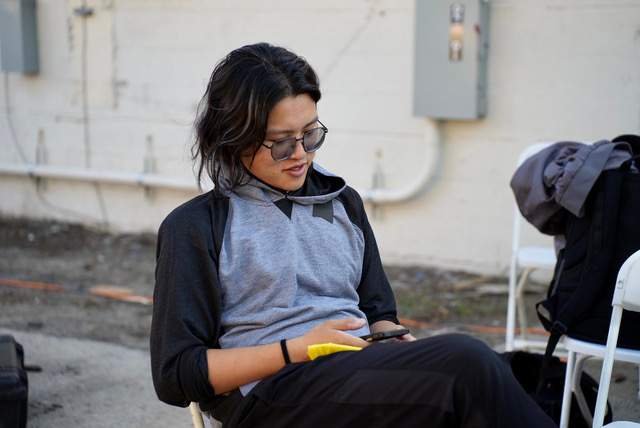Kai Tong’s Colorful Take on Drama

The world is a colorful place if you embrace it. For filmmaker Kai Tong this is a literal concept. Kai has committed his skill and artistry as a colorist to films by many of the most adventurous storytellers of present day. Naturally inclined to pursue productions which take a more creative bent, Mr. Tong’s talent has often become a featured facet of the films he has worked on. His peers take note of her incredible abilities and leverage them to the great benefit of these productions. Films like Out Damned Spot and 86 testify to the ability of color to impact our emotions. Under the purview of Kai, these films become an extraordinary experience which allow us to inhabit the state of the characters within them, a true apex of filmmaking.

To discover new places, one must be bold. Kai embraced this concept taking on the roles of writer, director, and colorist for the film Out Damned Spot. This film delves deeply into the concept of emphasizing the effects of color visually, emotionally, and metaphorically. An obvious “tip of the hat” to Shakespeare’s Macbeth, this film takes Lady Macbeth’s frustration over a color stain to a hyperbolic place. The central character is James, a man who has the unfortunate experience of being hit by a paintball when anything emotionally significant occurs in his life (ouch for the actor portraying James). No one but James can see this, but the audience certainly is aware of this pigment impact. If washed off, the paint has little lasting effect on James but when he is unable to clean himself one fateful day, the results are most dire. Kai describes his approach in this film stating, “When James’s life is in balance, going out and taking damage/going back home and washing the color off, everything is well saturated. Even though the main color is blue, he can still find peace every evening in his bathtub, which has a warm color. Then his balance breaks. I made a long linear change that lasts for 5 minutes, slightly turning down the saturation, shot by shot. When you are watching, you won’t even notice that is going to black and white gradually, until the last scene. When James shoots himself, we can see the red, so obvious on the blue bathroom glass. There’s no longer warm color.”
The feature film 86 is a story of intertwined tragedies. Crime, personal loss, and revenge are the nucleus of this story which reminds us that we are all one bad decision away from life-altering circumstances. As the colorist of 86, Kai worked closely with Fedor Lyass, Golden Eagle Award–Nominated (Russia’s version of the Oscars) cinematographer and DP of Hardcore Henry. Mr. Tong states, “For the Reggie’s Cafe scene, we used the climax scene of Fight Club as our reference. It has a very subtle color palette. Fedor’s exact words were, ‘Dollar Green, 100 Dollar Blue.’ The color of a $100 dollar bill. That kind of color in between blue and green. It implies that the scene is never about family, only money.” During the events that take place in the “drug room” the scenes are bathed in pure red and black, a very subdued color palette that is completely different from the rest of the film. 86 is remarkable in its look and pacing. Kai describes, “The most challenging part of this movie is that it’s a ‘one taker’. There are a dozen ‘hidden cuts’ in it, which result in each shot being over five-minutes long. There are a lot of interior and exterior transitions/changes in exposure levels, all of which make color grading a straight shot. In one of the most exaggerated shots, the difference between the light part of the exterior and the dark part of the interior was more than eight stops. This required me to do multiple keyframes in one shot. At most, there were 130 keyframes on different nodes in one shot.” 86 is a film which pulls the audience into a hyper-elevated emotional state of anxiety and panic, mirroring the turbulent world in which its characters exist. For those who love a thrill, this is filmmaking of the highest degree.
Writer : Calvin Hooney




